While spring is on the horizon, the trees are bare for now, and the landscape remains skeletal. Winter is the perfect time to master back button focus for your wildlife photography; before the foliage returns and locking focus on your subject becomes a trickier task.
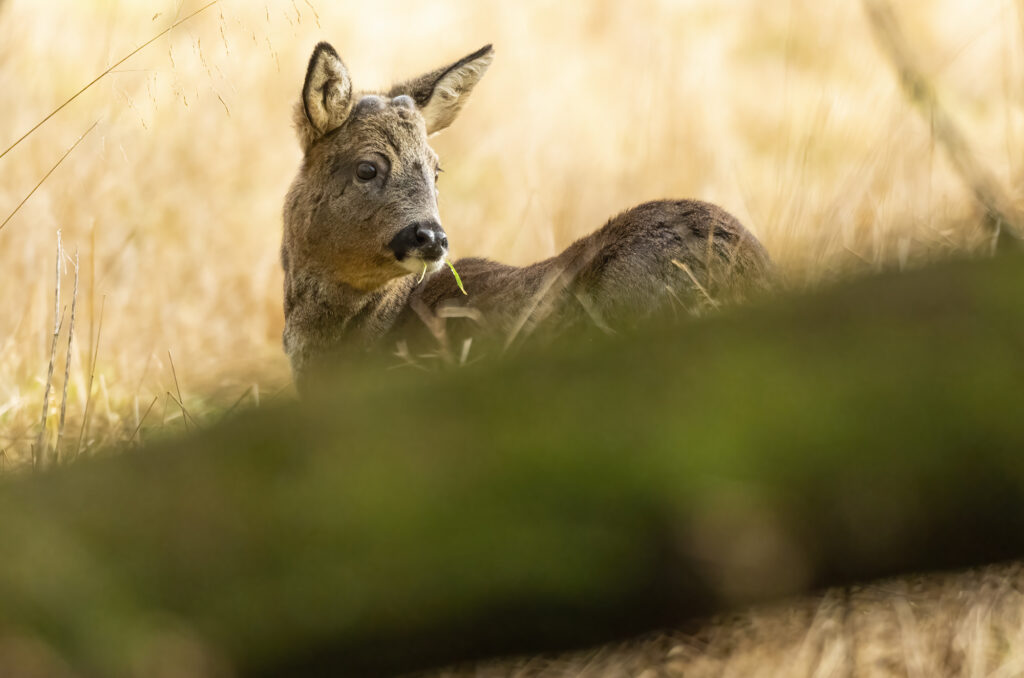
First, let me explain why you may want to consider using back button focus if you aren’t already. Imagine you have spotted a bird you want to photograph hopping through some foliage. You can’t see it that clearly and then suddenly it appears in a small gap, perfectly framed by leaves. You depress the shutter button to lock focus but, annoyingly, your autofocus locks onto one of the leaves. Either you end up with a lovely shot of some leaves in focus. Or you struggle to try and refocus on the bird while your subject calmly flies off to the next tree. It is safe to say that having to refocus after every shot in a situation like this is very time-consuming and can result in a missed image.
This focusing faff is why I switched to using back button focus and would encourage others to do the same. More recently, this technique has been invaluable for capturing the natural behaviours of my local roe deer bucks.
What is back button focus?
Back button focus splits the focus and shutter firing functions into two buttons so you can control them separately instead of having to half-depress the shutter button to achieve focus. You then control the auto-focus with a button on the back of the camera and, once focus is achieved, you take the shot by fully depressing the shutter button. It can take a while to get used to, but it can make a massive difference to your photography.
Bucks beyond branches
Although there are occasions when I can photograph the roe deer without anything obscuring my view, these are probably equalled by the number of times when I need to shoot through branches, foliage, and fences. The image below was captured at the end of January when the tree branches that lined the field were completely bare. The lack of leaves meant I could stand in the woods and use back button focus to lock onto the buck strolling up the field edge. Instead of moving my position, using back button focus meant I could quickly and easily refocus as he passed where I was standing. He knew I was there, but my lack of movement meant he wasn’t disturbed.
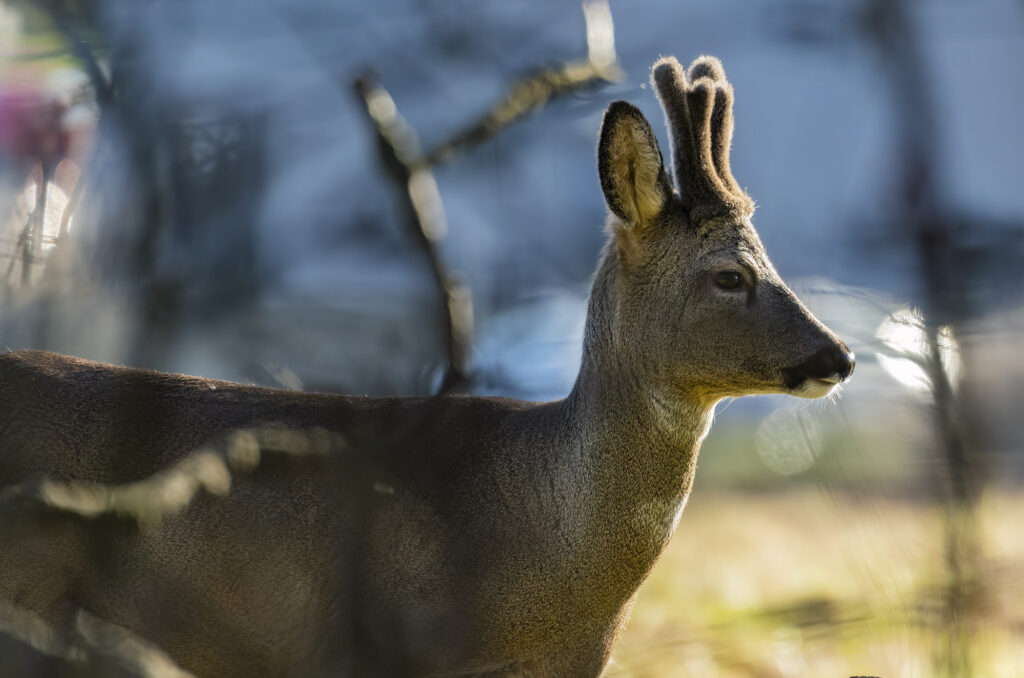
Grappling with grass
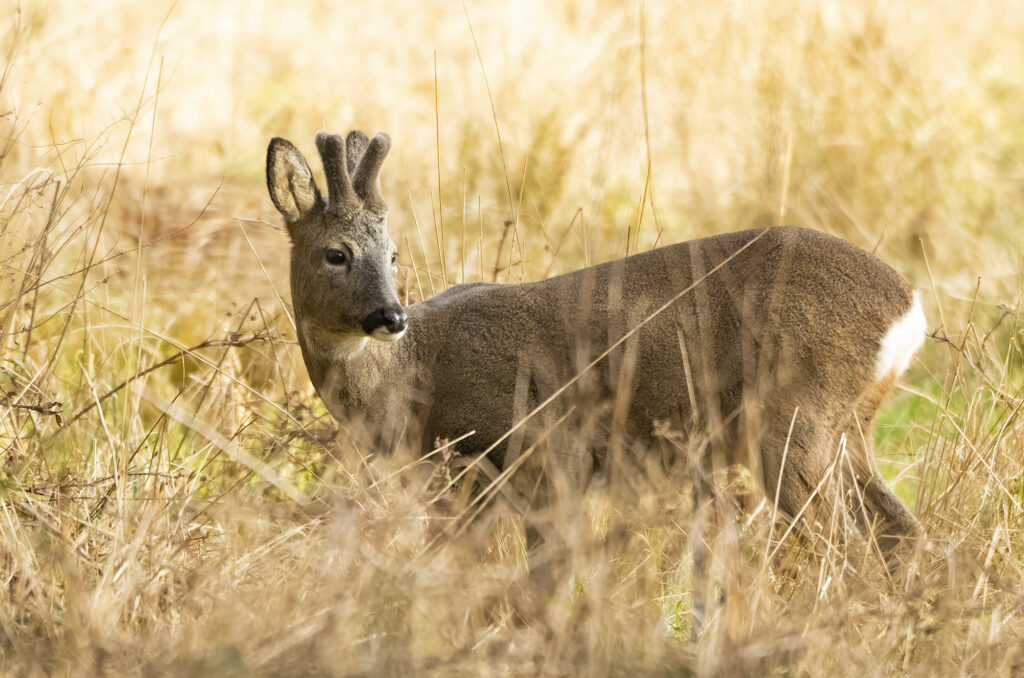
If you want to photograph roe deer behaviour, at some point you will need to do so when long grass surrounds them. Occasions like this are when back button focus can be your saviour. With so many bits of foliage waving around in front of your subject, it can be easy to focus on the grass instead of the deer. To create the image below, I used back button focus to lock onto my subject (after a bit of hunting from the autofocus) and then recomposed slightly to get the clearest view possible. Locking the focus and then leaving it alone meant that when it came to the crucial moment of firing the shutter, I knew the camera wouldn’t refocus on the long grass. All this happened in a matter of seconds, which stopped me from missing the moment when Hellboy’s ears were pointing forward, and he was looking straight at me.
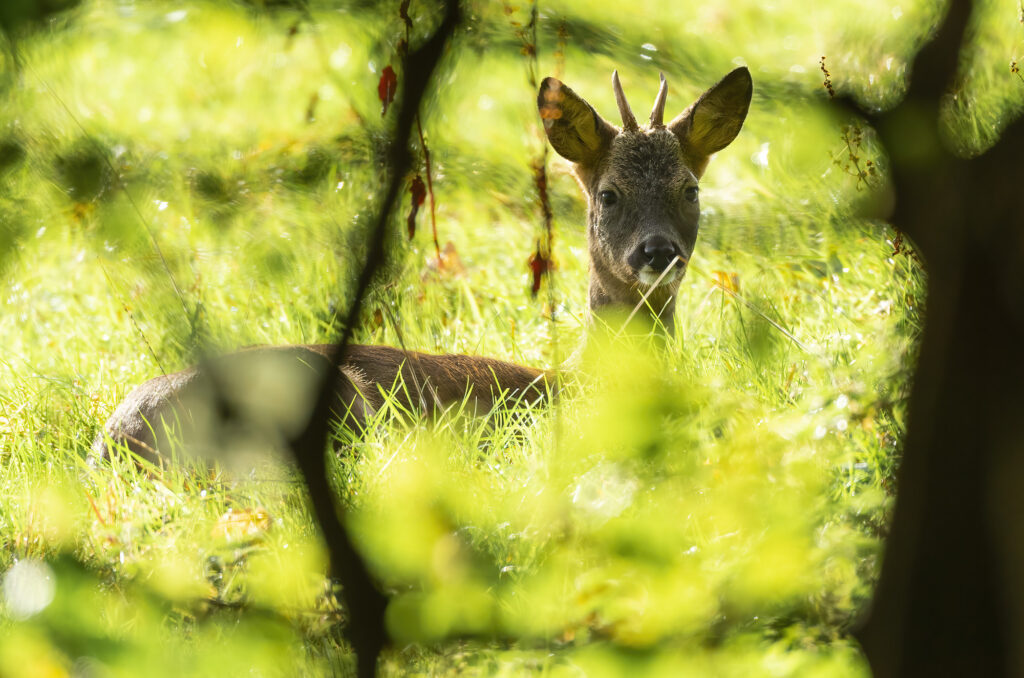
Creative captures
You may have noticed that the effects created by out-of-focus foliage can be attractive. I now enjoy seeing the patterns and colour washes I can achieve when shooting through natural and man-made obstacles. Barbed wire fences create sparkling lines, and green leaves become splashes of colour.
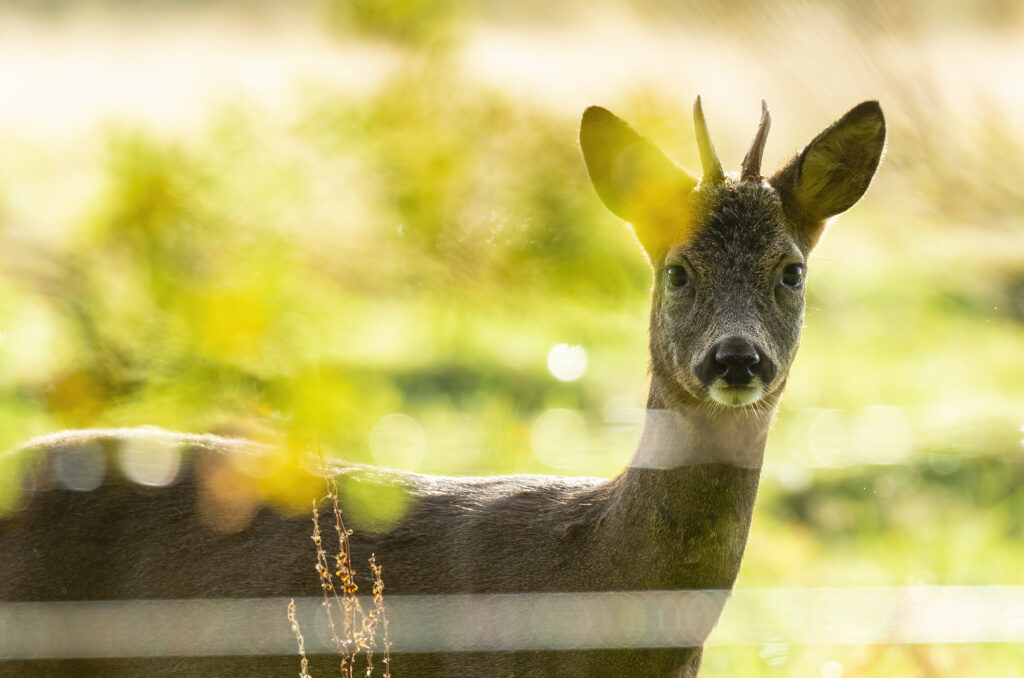
Using this technique can also provide the opportunity to capture intimate images that look like they were taken by a hidden camera, such as when Quint decided to scratch, shown in the image below.
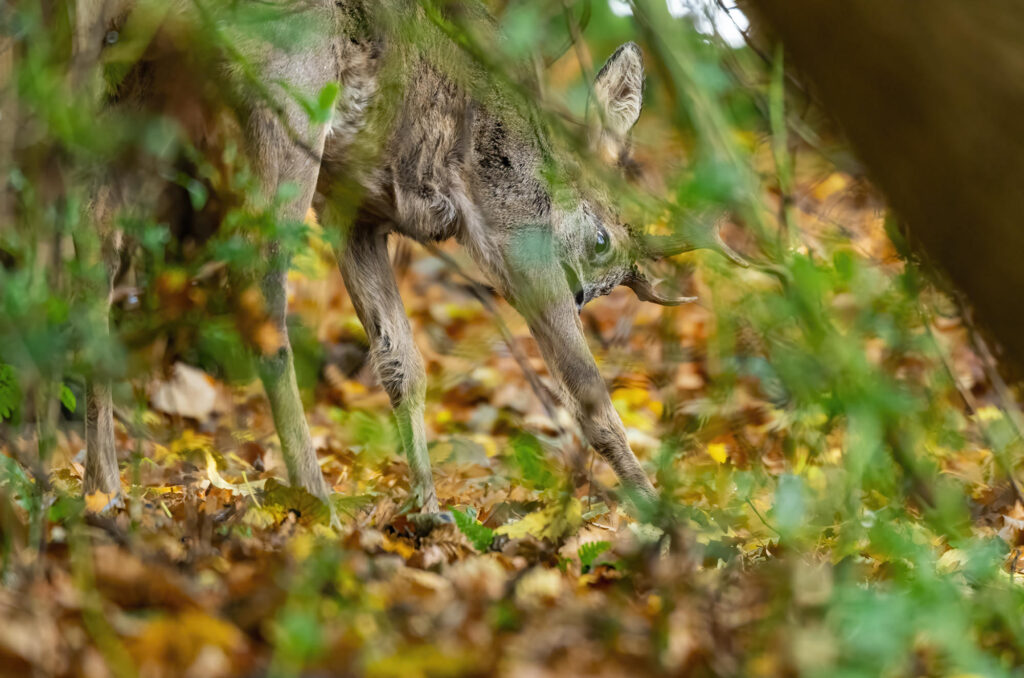
Don’t get me wrong – I am not saying that capturing these images could only be achieved using the back button focus technique. I do, however, know that the number of in-focus photos from these sessions with the deer would have been drastically reduced without it. The time taken for each shot would have also risked missing the moment.
I would love to hear if you have tried using back button focus and whether you agree it can make a difference to your photography – please comment below!

